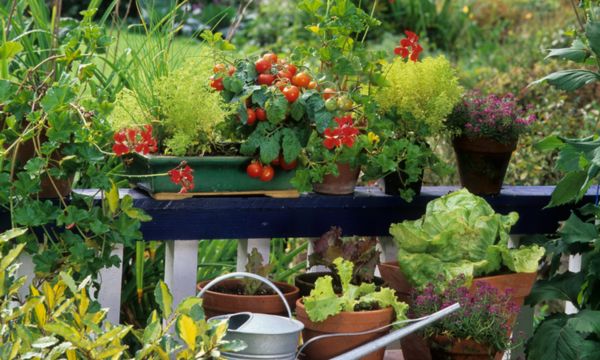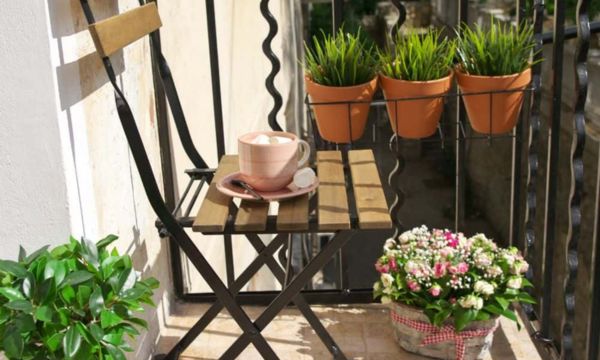Thriving in Adversity: Tiny House Gardening in Challenging Climates
Creating life and beauty through tiny home gardening, even in the harshest environments, is a monument to human ingenuity and resilience. Dealing with challenging weather conditions adds another layer of complexity to the process of small space gardening, which already presents a unique set of challenges. Nevertheless, it is possible to grow a garden that thrives despite challenges if you have the necessary information, skills and motivation. This article discusses the art of gardening in small spaces, especially in harsh climates, and offers advice on how to make your green fantasies a reality.
Learn More about Potentially Challenging Climates:
Extreme heat or cold, high winds, heavy rainfall or drought are some of the variables that can be associated with a climate that is considered challenging. These conditions can put a considerable strain on the installation and require careful planning and adaptation to the situation.
Choose Plants that can Withstand Stress:
When growing plants in harsh climates, it is imperative to select strains that have naturally evolved to tolerate specific conditions. Depending on the difficulties of your local environment, look for plant varieties that can withstand temperature extremes, are hardy, drought resistant, or disease resistant.
Microclimate in a Small Garden:
Creating a microclimate, or localized area, that is slightly different from the rest of the garden is one of the benefits of a small garden. To protect delicate plants from the harmful effects of the environment, you can create sheltered areas or shade by erecting walls, fences and other structures.
Windshields and Other Forms of Protection:
Windbreaks are essential in windy climates to protect more fragile plants from high winds. Create a protective barrier and mitigate the effects of high winds on your property by installing trellises, hedges or other types of structures.
Soil Improvement for Harsh Climates:
In areas that are difficult to work, improving soil conditions is critical. To improve soil structure, water retention and nutrient availability, amend the soil with organic matter that has had plenty of time to decompose, such as compost or manure.
Covered to Maintain a Constant Temperature:
Mulching is an effective way to control soil temperature and moisture. Mulch should be placed around the plants to keep the soil from overheating in warm climates and to prevent freezing in colder locations.
Water Management and Conservation:
In areas with limited water resources or frequent droughts, effective water management is an absolute must. To limit the amount of water lost to evaporation, use a drip irrigation system that collects rainwater in buckets and waters your plants during cooler times of the day.
Growing Plants in Cold Frames and Greenhouses:
To extend the growing season in regions with extremely cold climates, a greenhouse or cold greenhouse are a viable option to consider. Despite frost and cold temperatures, plants can thrive in the conditioned environment these structures provide.
Indoor Gardening as An Alternative to Harsh Climates:
If you live in an area with long winters or harsh temperatures, consider growing plants indoors using artificial lights or a sunny home window sill. Grow your own fresh produce all year round by growing herbs, microgreens and vegetables.
Learn by Trying Everything:
Gardening in difficult-to-grow climates requires flexibility and a willingness to gain knowledge through experience. Embrace experimentation, keep a garden notebook, and adjust your strategies based on what you find most successful in your area’s specific conditions.
Respect Even the Smallest Victories:
In difficult-to-work environments, even the smallest horticultural achievement is worth celebrating. Every plant that thrives through your hard work and nature’s resilience is a monument.
Conclusion:
Successful gardening in a small house in a harsh climate requires a journey of discovery and perseverance. Embrace the knowledge gained with each new season and adapt your strategy to meet the challenges of specific environments. Not only will your small garden withstand difficult conditions, it will inspire others to find beauty and live in difficult conditions.
FAQs:
1. Can I grow vegetables in extremely cold climates with short growing seasons?
Yes, you can grow hardy vegetables like kale, carrots, and onions in extremely cold climates. Use a greenhouse or cold frame to extend the growing season and protect plants from frost.
2. How can I protect my plants from heavy rainfall and flooding?
Raised beds and well-drained soil help prevent waterlogging during heavy rains. If flooding is a problem, consider container gardening or growing plants in benches or bins.
3. Can I grow tropical plants in harsh climates?
Growing tropical plants in challenging climates can be difficult, but with proper care and attention it is possible. Consider using indoor gardening methods or creating a microclimate to mimic tropical conditions.
4. What are some low maintenance plants for harsh climates?
Drought-tolerant plants such as succulents, native wildflowers and ornamental grasses are low-maintenance options for harsh climates. They require minimal water and can withstand harsh conditions.
5. Are there any specific pests or diseases to be aware of in this challenging climate?
A challenging climate can create favorable conditions for a particular pest or disease. Monitor your plants regularly and take preventative measures such as using row covers or natural repellents to protect them.
Ad Nowadays our smartphones have become a powerful tool, unlike in the past when they were very […]
More Small Space, Big Harvest: The Joy of Tiny House Vegetable Gardening
Small Space, Big Harvest: The Joy of Tiny House Vegetable Gardening
Ad You don’t have to give up the fun of growing your own veggies just because you’re […]
More Making the Most of Sunlight: Tips for Sun-loving Plants in Tiny Gardens
Making the Most of Sunlight: Tips for Sun-loving Plants in Tiny Gardens
Ad If you only have a little garden space, that doesn’t mean you have to limit the […]
More